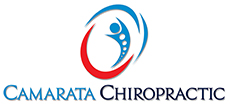Foot Pain? We Treat Feet!
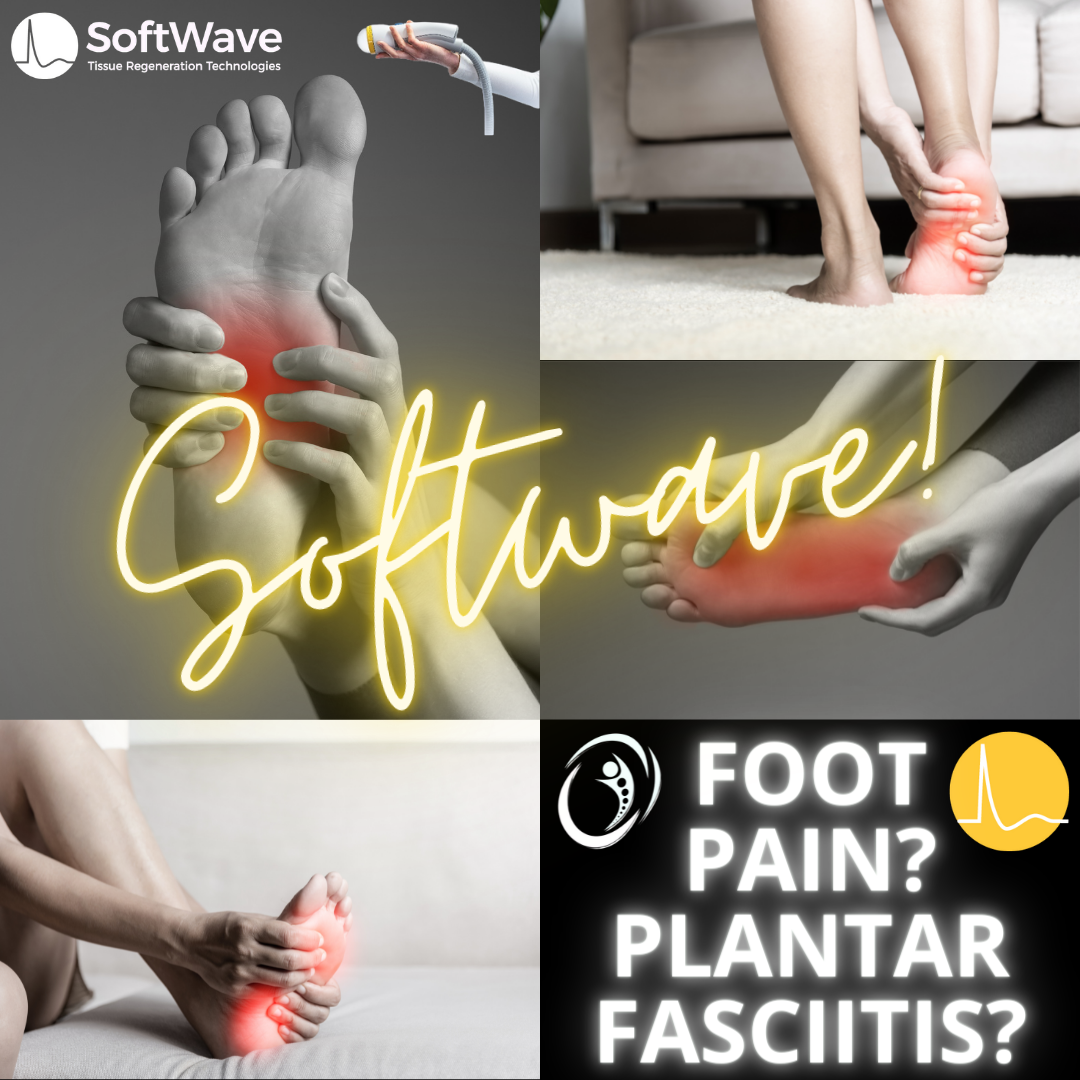
Foot Pain? We treat feet!
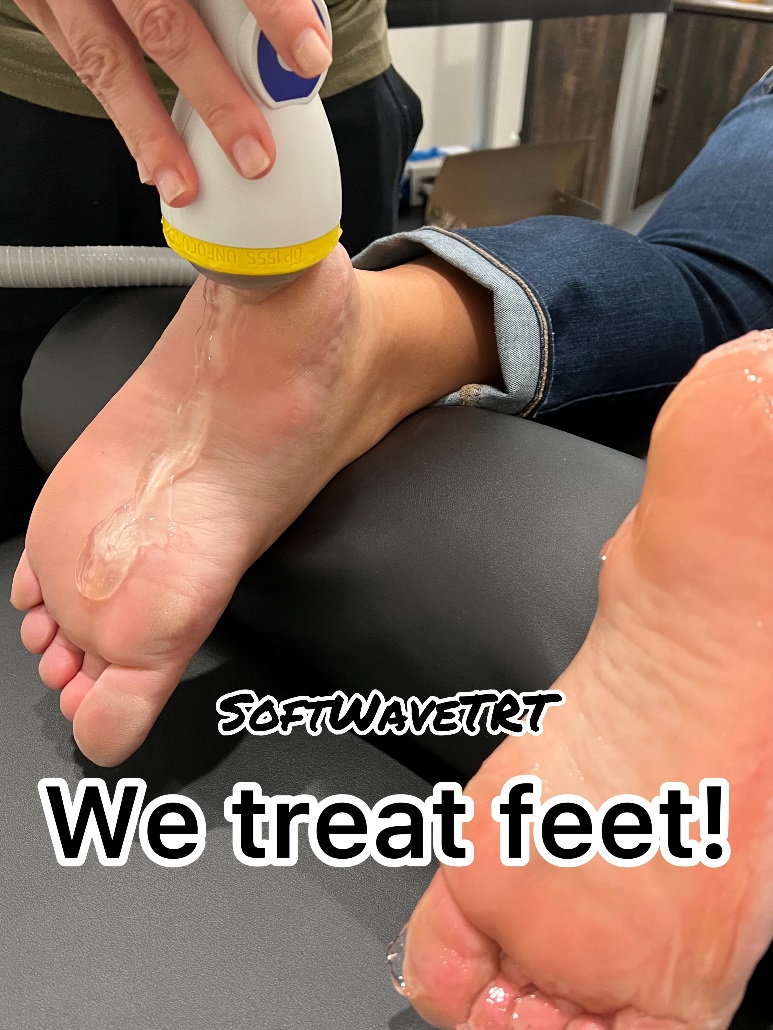
Plantar Fasciitis! Morton’s Neuroma! Peripheral Neuropathy! Arthritis! Heel Spur Pain! Achilles tendon! Ankle Pain! Sports injuries! Tight calves! Sprains, Strains & More!
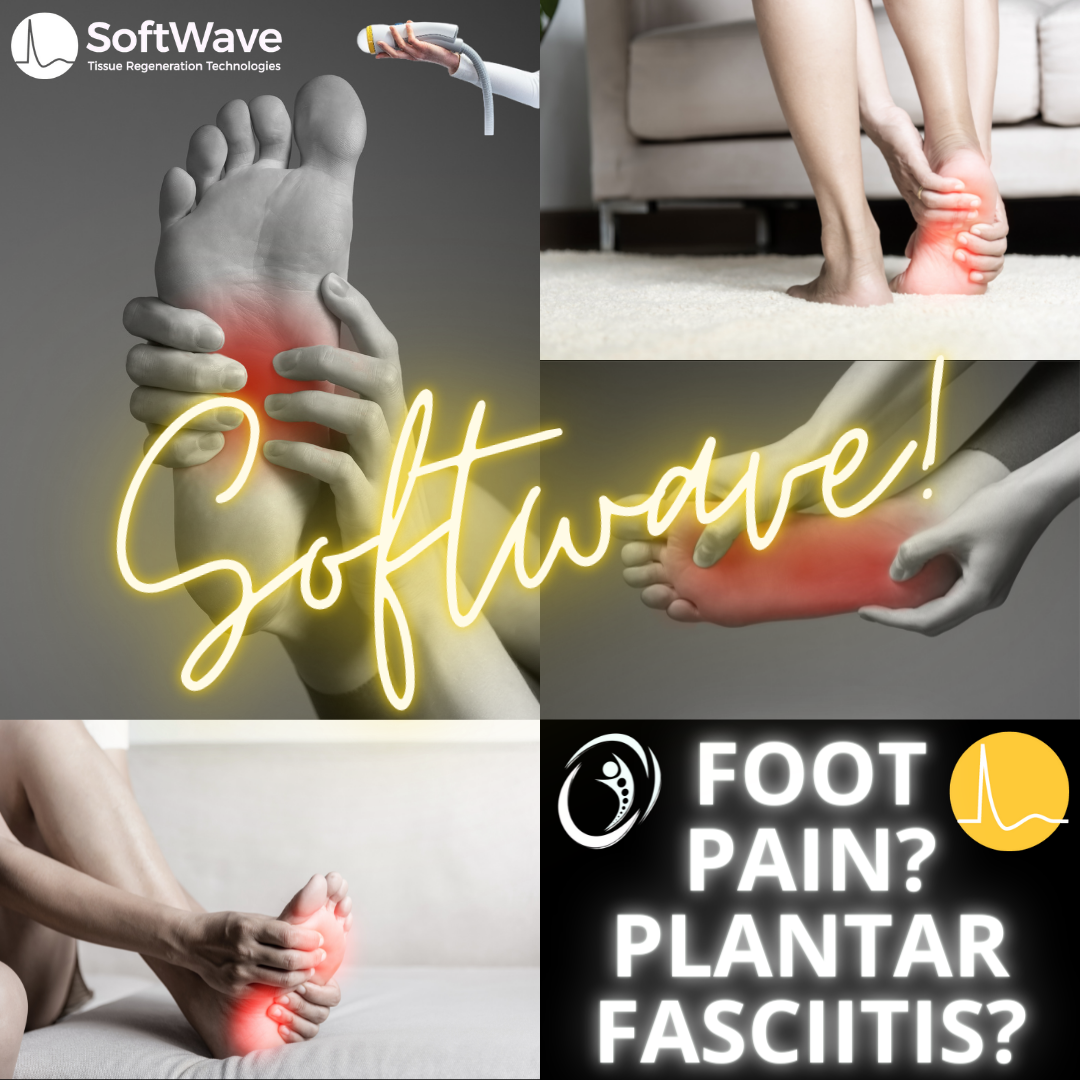
The foot is one of the most complex parts of the body. Each foot is made up of 26 bones connected by many joints, tendons, ligaments, muscles, nerves, blood vessels and fascia.
“Injury, overuse or conditions causing inflammation involving any of the bones, ligaments or tendons in the foot can cause foot pain. Arthritis is a common cause of foot pain. Injury to the nerves of the feet may result in intense burning pain, numbness or tingling (peripheral neuropathy).” -Mayo Clinic
https://www.mayoclinic.org/symptoms/foot-pain/basics/causes
Biomechanics, movement screenings, gait analysis, posture analysis, alignment of spine, hips and pelvis are a few methods we utilize to evaluate structure and function. This will help us understand and identify causes of your foot pain and best ways to help you inside the office and outside the office for at home recommendations!
What are common causes of foot pain?
Plantar Fasciitis.
“Plantar fasciitis is characterized by severe pain in the heel of the foot, especially when standing up after resting. The condition is due to an overuse injury of the sole surface (plantar) of the foot and results in inflammation of the fascia, a tough, fibrous band of tissue that connects the heel bone to the base of the toes. Plantar fasciitis is an irritation of the plantar fascia. This thick band of connective tissue travels across the bottom of the foot between the toes and the heel. It supports the foot's natural arch. It stretches and becomes taut whenever the foot bears weight.” https://www.hopkinsmedicine.org/health/conditions-and-diseases/foot-pain-and-problems
How common is plantar fasciitis?
“Plantar fasciitis is extremely common. More than 2 million people in the U.S. are treated for it each year. Around 1 in 10 people will develop plantar fasciitis at some point throughout their life.” https://my.clevelandclinic.org/health/diseases/14709-plantar-fasciitis
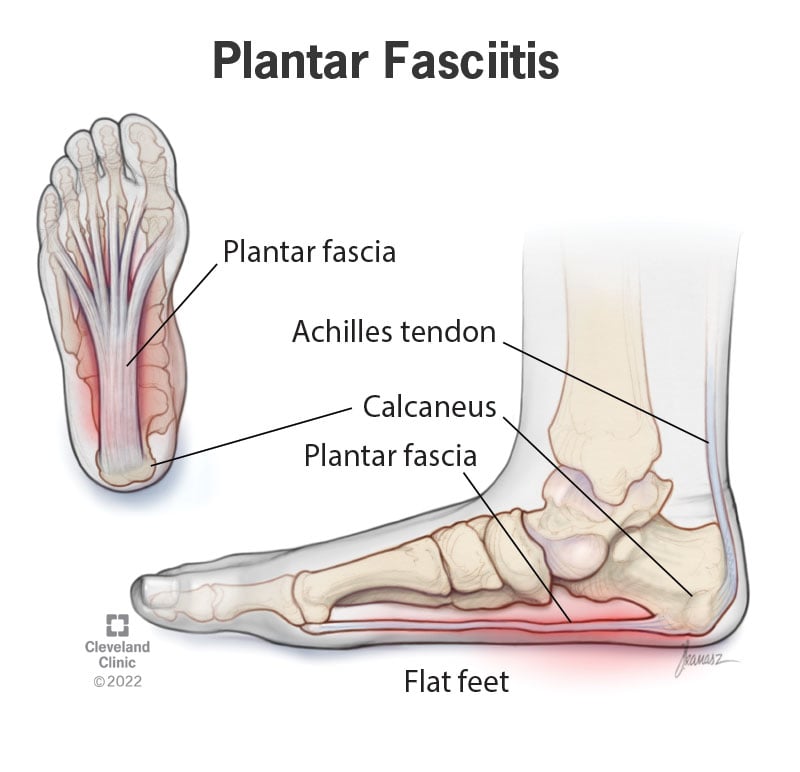
What are the symptoms of plantar fasciitis? https://my.clevelandclinic.org/health/diseases/14709-plantar-fasciitis
“The most common symptoms of plantar fasciitis include:
- Heel pain.
- Pain in the arch of your foot.
- Stiffness.
- Swelling around your heel.
- A tight Achilles tendon.”
What causes plantar fasciitis? https://my.clevelandclinic.org/health/diseases/14709-plantar-fasciitis
“Anything that irritates or damages your plantar fascia can cause plantar fasciitis, including:
- Being on your feet all day for work.
- Playing sports.
- Exercising or working on a hard surface (like a warehouse floor or the sidewalk).
- Exercising without stretching or warming up.
- Wearing shoes that don’t support your feet well enough (like flip flops or flat, flexible sneakers).
- Walking or standing barefoot while you’re at home.
Some health conditions can cause plantar fasciitis, including:
- High arch feet.
- Flat feet.
- Obesity (or gaining more than 15 pounds in a few months).”
Heel spur pain.
“A heel spur is a bone growth on the heel bone. It is usually located on the underside of the heel bone where it attaches to the plantar fascia, a long band of connective tissue running from the heel to the ball of the foot. This connective tissue holds the arch together and acts as a shock absorber during activity. If the plantar fascia is overstretched from running, wearing poor-fitting shoes, or being overweight, pain can result from the stress and inflammation of the tissue pulling on the bone. Over time, the body builds extra bone in response to this stress resulting in heel spurs.” https://www.hopkinsmedicine.org/health/conditions-and-diseases/foot-pain-and-problems
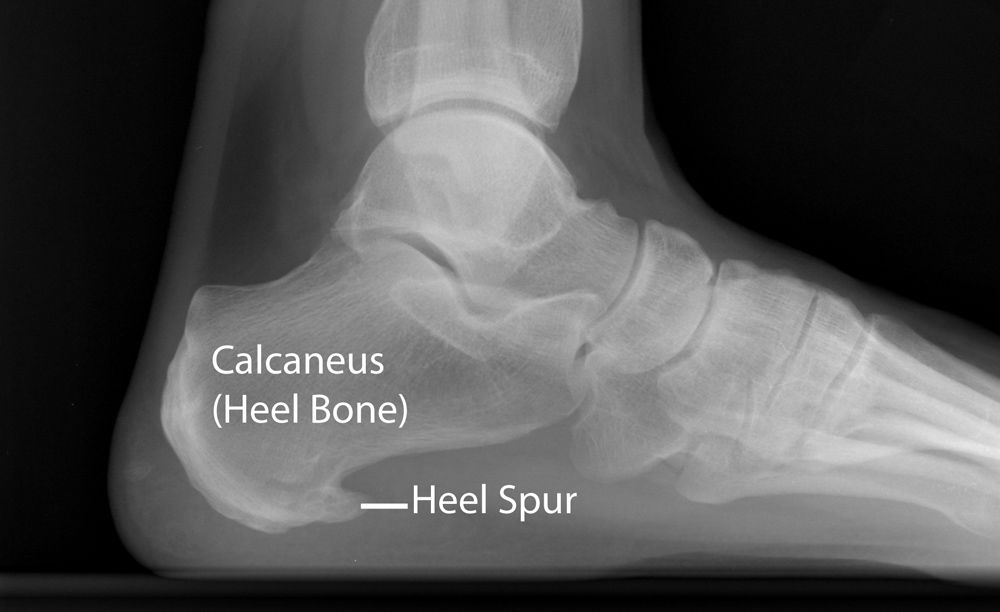 https://orthoinfo.aaos.org/en/diseases--conditions/plantar-fasciitis-and-bone-spurs/
https://orthoinfo.aaos.org/en/diseases--conditions/plantar-fasciitis-and-bone-spurs/
Morton’s neuroma.
“Morton's neuroma is a painful condition that affects the ball of your foot, most commonly the area between your third and fourth toes. Morton's neuroma may feel as if you are standing on a pebble in your shoe or on a fold in your sock.
Morton's neuroma involves a thickening of the tissue around one of the nerves leading to your toes. This can cause a sharp, burning pain in the ball of your foot. You may have stinging, burning or numbness in the affected toes.”
https://www.mayoclinic.org/diseases-conditions/mortons-neuroma/symptoms-causes/syc-20351935
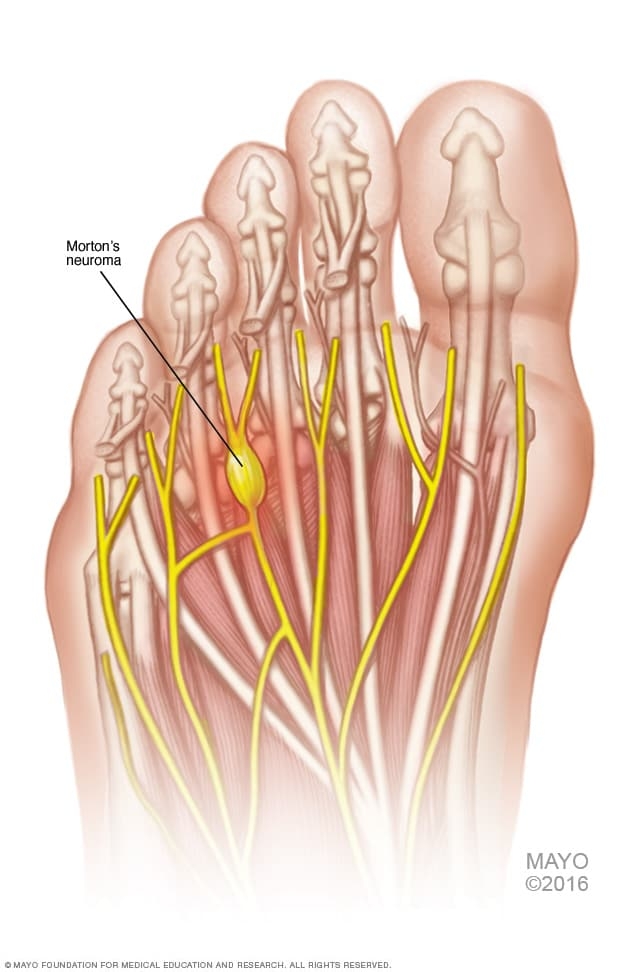
Achilles tendon problems.
“The Achilles tendon is the largest tendon in the human body. It connects the calf muscle to the heel bone. However, this tendon is also the most common site of rupture or tendonitis, an inflammation of the tendon due to overuse. Achilles tendonitis is caused by overuse of the tendon and calf muscles. Symptoms may include mild pain after exercise that worsens gradually, stiffness that disappears after the tendon warms up, and swelling.” https://www.hopkinsmedicine.org/health/conditions-and-diseases/foot-pain-and-problems
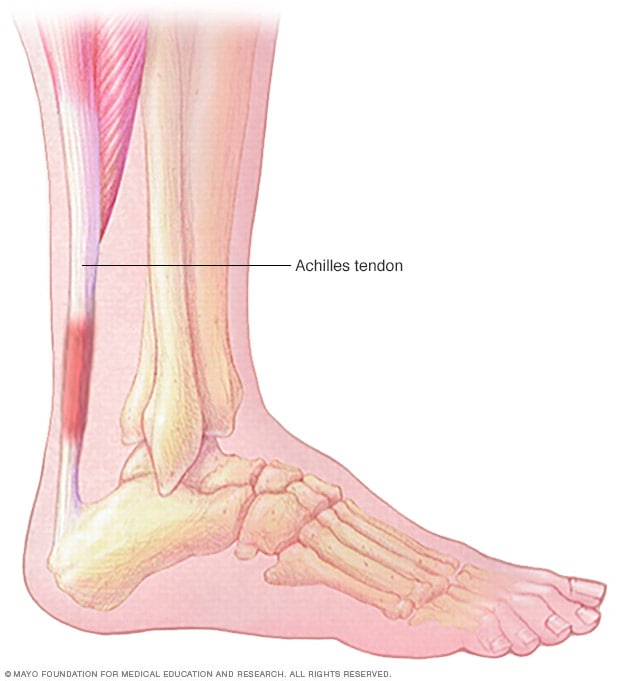 https://www.mayoclinic.org/diseases-conditions/achilles-tendinitis/symptoms-causes/syc-20369020
https://www.mayoclinic.org/diseases-conditions/achilles-tendinitis/symptoms-causes/syc-20369020
Ankle sprains.
“An ankle sprain is an injury to the foot's ligaments in the ankle. Ligaments are tough bands of elastic tissue that connect bones to each other. Ankle sprains may occur if the ankle rolls, turns, or twists beyond its normal range of motion. Ankle sprains may be caused by awkward foot placement, irregular surfaces, weak muscles, loose ligaments, or wearing shoes with spiked heels. The symptoms of a sprain will depend on how severely the ligaments are stretched or torn, but usually include swelling, pain, or bruising.” https://www.hopkinsmedicine.org/health/conditions-and-diseases/foot-pain-and-problems
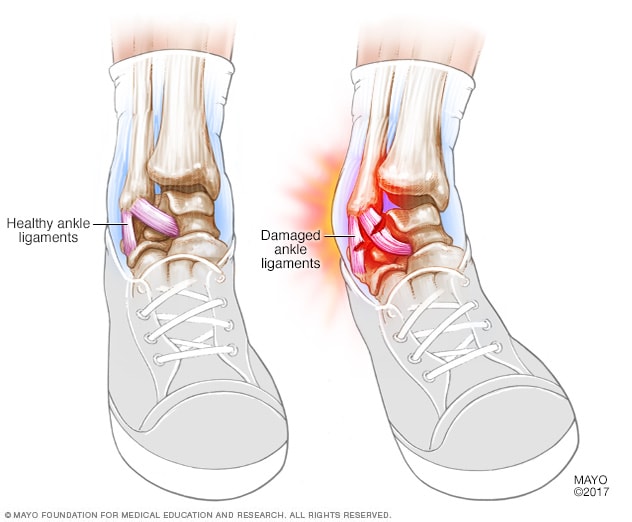 https://www.mayoclinic.org/diseases-conditions/sprained-ankle/symptoms-causes/syc-20353225
https://www.mayoclinic.org/diseases-conditions/sprained-ankle/symptoms-causes/syc-20353225
Diabetes and vascular disease – Neuropathy.
“Diabetes affects the nerves and blood vessels and blood flow throughout the whole body, including the legs and feet.” https://www.hopkinsmedicine.org/health/conditions-and-diseases/foot-pain-and-problems
“Diabetes is the leading cause of polyneuropathy in the U.S. About 60 to 70 percent of people with diabetes have mild to severe forms of nerve problems that can cause numb, tingling, or burning feet, one-sided bands or pain, and numbness and weakness on the trunk or pelvis.” https://www.ninds.nih.gov/health-information/disorders/peripheral-neuropathy
What is Peripheral Neuropathy?
https://www.ninds.nih.gov/health-information/disorders/peripheral-neuropathy
“Peripheral neuropathy refers to the many conditions that involve damage to the peripheral nervous system, which is a vast communications network that sends signals between the central nervous system (the brain and spinal cord) and all other parts of the body.
Peripheral nerves send many types of sensory information to the central nervous system (CNS), such as the message that your feet are cold. They also carry signals from the CNS to the rest of the body. Best known are the signals to the muscles that tell them to contract, which is how we move, but there are different types of signals that help control everything from our heart and blood vessels, digestion, urination and sexual function to our bones and immune system.
More than 20 million people in the U.S. are estimated to have some form of peripheral neuropathy, but this figure may be significantly higher as not all people with symptoms of neuropathy are tested for the disease and tests currently do not look for all forms of neuropathy.
Nerve signal interruption
The peripheral nerves are like cables that connect different parts of a computer or connect to the Internet. When they malfunction, complex functions can grind to a halt.
Nerve signaling in neuropathy is disrupted in three ways:
- Loss of signals normally sent
- Inappropriate signaling when there shouldn't be any
- Errors that distort the messages being sent
Some forms of neuropathy involve damage to only one nerve (mononeuropathy). Neuropathy affecting two or more nerves in different areas is called multiple mononeuropathy or mononeuropathy multiplex. More often, many or most of the nerves are affected (polyneuropathy).
Classifying the nerves and peripheral neuropathies
More than 100 types of peripheral neuropathy have been identified, each with its own symptoms and prognosis. Symptoms vary depending on the type of nerves—motor, sensory, or autonomic—that are damaged.
- Motor nerves control the movement of all muscles under conscious control, such as those used for walking, grasping things, or talking
- Sensory nerves transmit information such as the feeling of a light touch, temperature, or pain from a cut
- Autonomic nerves control organs to regulate activities that people do not control consciously, such as breathing, digesting food, and heart and gland functions
Most neuropathies affect all three types of nerve fibers to varying degrees; others primarily affect one or two types. Doctors use terms such as predominantly motor neuropathy, predominantly sensory neuropathy, sensory-motor neuropathy, or autonomic neuropathy to describe different conditions.
About 75 percent of polyneuropathies are “length-dependent,” meaning the farthest nerve endings in the feet are where the symptoms develop first or are worse.”
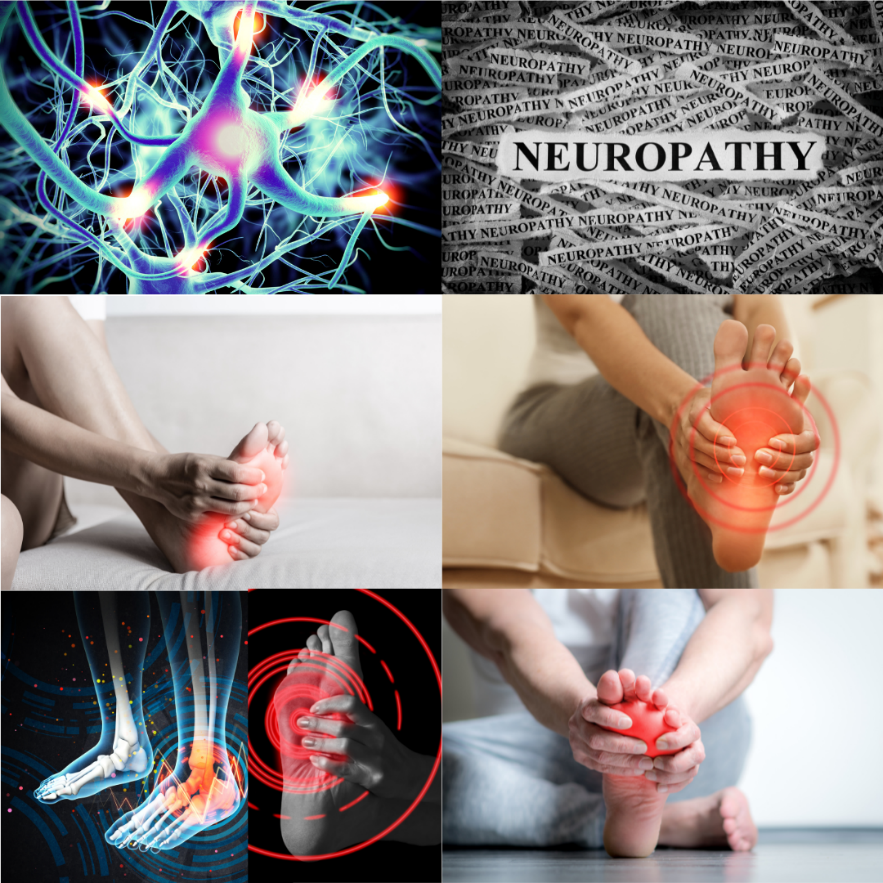
SoftWave Tissue Regeneration Technology is a revolutionary and futuristic therapy being used right here at Camarata Chiropractic & Wellness to help you regain function and improve your quality of life! We are seeing amazing results daily! Let us help you get out of pain fast and get your quality of life back!
What is SoftWave TRT?
SoftWave Tissue Regeneration Technologies OrthoGold 100 is an exciting breakthrough option now available in the field of regenerative medicine! It is clinically proven, both nationally and internationally recognized and FDA cleared with a high success rate in clinical trials
SoftWave TRT uses patented technology to reach an injured area at the cellular level to successfully turn on the body's natural healing process
An advanced shock wave using electrohydraulic spark gap technology with a patented parabolic reflector that produces an unfocused or parallel supersonic acoustic wave over a broad area resulting in accelerated healing
SoftWave benefits may include:
- Increases blood supply
- Modulates inflammation
- Stimulates, activates and recruits resident stem cells
- Repairs, remodels and regenerates tissue
- Reduces acute and chronic pain
Why SoftWave TRT?
SoftWave gets your body unstuck and healing so you can get back to living!
- Non surgical & drug free
- Decreases pain & inflammation to improve function
- Regeneration of damaged tissue
- Wider and deeper treatment areas: 7cm x 12cm
- 10-minute treatment times
- Long lasting effect
The SoftWave patented applicator design makes it possible to spread energy to a large area of both superficial and deep tissue soliciting a biological response to the target area without causing microtrauma.
https://www.naturalhealingroc.com/
Note from Dr Sam Camarata (Owner of Camarata Chiropractic & Wellness)
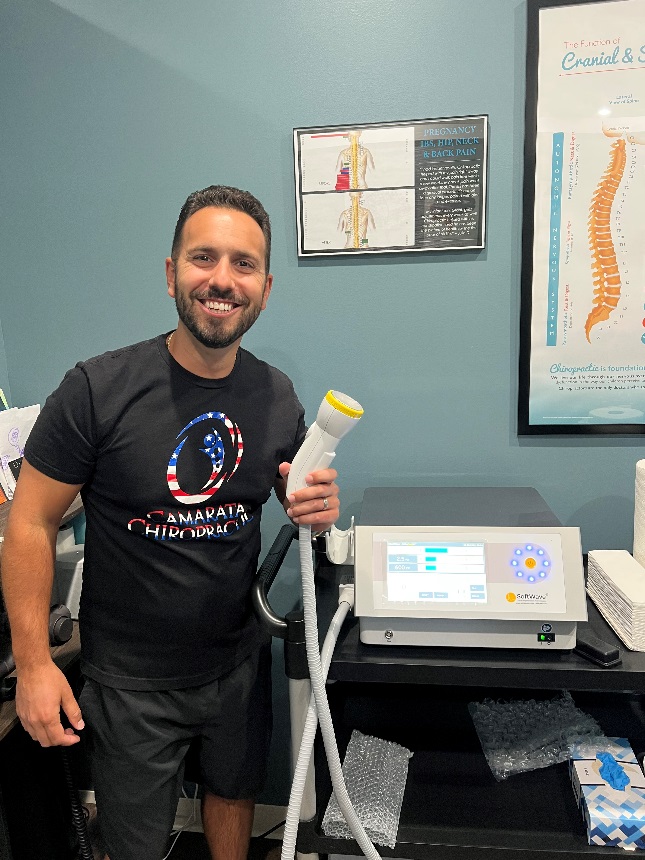
“I’ve never witnessed ANY technology that can produce results like SoftWave TRT can! It’s one of the biggest breakthroughs in regenerative medicine! I wish I had this technology when I opened my own practice in 2015. Now it’s 2023 and we are going to make a HUGE impact right here in our community and get people out of pain, fast, naturally, and allow them to get their lives back so they can do what they love to do!
We are constantly learning and adapting to changes in healthcare. The biggest constant is that the body can heal itself when you give it what it needs to thrive from within! I believe this technology will be in every doctor’s office once they learn the benefits. The research supports it and more research is coming! There’s no turning back now! Ride the SoftWave! You gotta feel it to heal it!”
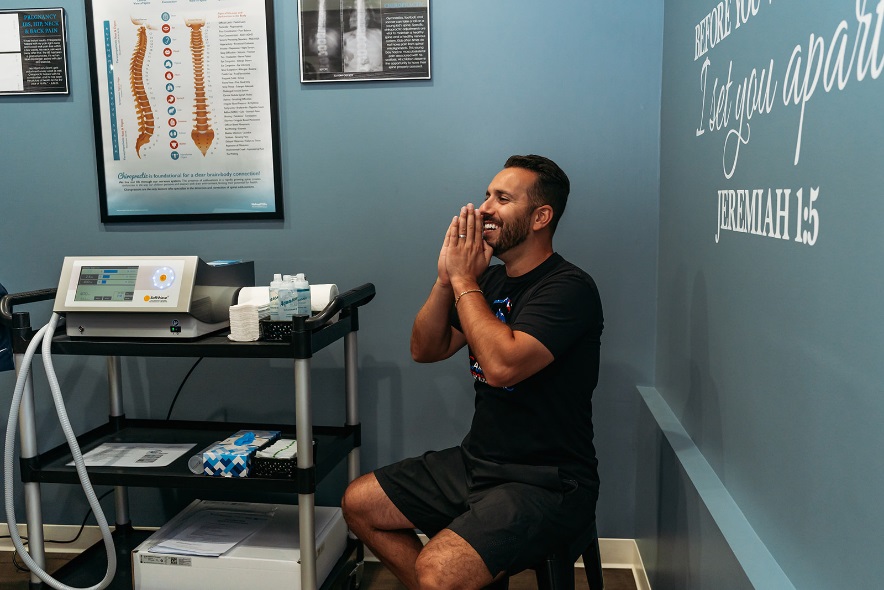
$49 NEW PATIENT SPECIAL includes diagnostic and 1st session! Come experience the WAVE! Get out of pain fast!
Send in your appointment request on our website below, give us a call or email us!
Natural Healing ROC
https://www.naturalhealingroc.com/
Camarata Chiropractic & Wellness
3237 Union St North Chili NY 14514
Dr Sam Camarata
585-617-4145
Rochester NY SoftWave Tissue Regeneration Technology
